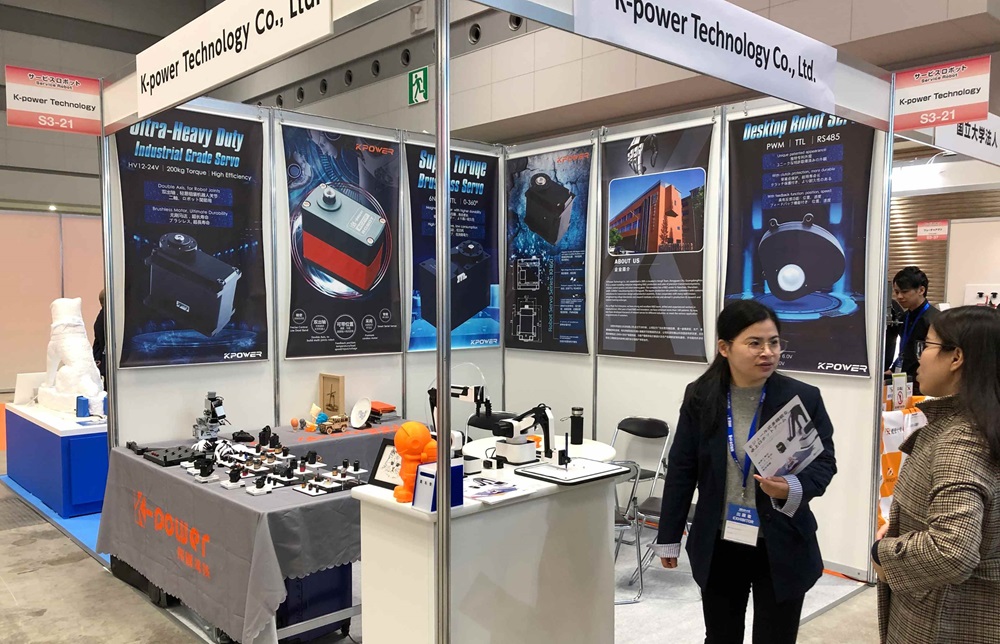Unlock the Power of Servo Motors with Arduino: A Beginner’s Journey into Robotics
Imagine a tiny robot arm smoothly picking up objects, a remote-controlled vehicle turning precisely, or a camera gimbal stabilizing images seamlessly. All of these fascinating feats rely on a common component: the servo motor. If you've ever thought about creating your own robotic projects, mastering how to program servo motors with Arduino is one of the most rewarding starting points.

What is a Servo Motor?
At its core, a servo motor is a small, highly precise motor designed to rotate or position an object with accuracy. Unlike standard motors that run continuously, servos are built for controlled movement—they respond to signals from a microcontroller, such as an Arduino, and rotate to a specific angle. This makes them invaluable in applications where position control matters—robotics, automation, remote-control vehicles, and even animatronics.
A typical servo includes a core motor, gears, and a control circuit, all packed into a compact package. The control circuit interprets the signals from your Arduino and adjusts the motor's position accordingly. Usually, a servo has three wires: power (red), ground (black or brown), and signal (white or yellow).
Understanding PWM—The Heartbeat of Servo Control
Pulse Width Modulation (PWM) is the backbone of controlling servo motors. Essentially, it’s a way to send a digital signal that varies in width (duration), which the servo interprets as a command for its position. Think of it as a series of buzzes—longer buzzes mean one thing, shorter buzzes another. The servo's internal circuit reads these pulses and turns the motor to the corresponding position.
When controlling servos with Arduino, you typically send a PWM signal that ranges between approximately 1 millisecond (ms) to 2 ms in pulse width, repeated every 20 ms. The 1 ms pulse corresponds to the 0° position, 1.5 ms to the 90° (center), and 2 ms to the 180° position.
Getting Started: Essential Components
Before diving into programming, gather the basics:
Arduino board (Uno, Mega, etc.) Servo motor (e.g., SG90, MG90S, or any standard servo) Breadboard and jumper wires External power supply for servo (recommended for larger servos) Resistors and other optional components for added functionalities
Connecting the Servo to Arduino
The connection is straightforward:
Connect the red wire of the servo to the 5V output on Arduino (if the servo's power requirements are compatible) or to an external power source. Connect the black or brown wire to GND. Connect the signal wire (yellow, white, or orange) to a PWM-capable pin on Arduino (such as pin 9).
Remember, if using multiple servos or a servo that draws significant current, power them externally rather than directly from the Arduino to prevent voltage drops or resets.
Writing Your First Program: Hello Servo!
Now comes the exciting part—programming. Fortunately, Arduino makes controlling servos easy with the Servo library, built into the IDE. This library handles the complex timing, letting you focus on the behavior you want to create.
Here’s a simple sketch to get your servo moving:
#include // Include the Servo library Servo myServo; // Create servo object void setup() { myServo.attach(9); // Attach servo to pin 9 } void loop() { myServo.write(0); // Move servo to 0 degrees delay(1000); // Wait for 1 second myServo.write(90); // Move servo to 90 degrees delay(1000); // Wait for 1 second myServo.write(180); // Move servo to 180 degrees delay(1000); // Wait for 1 second }
Upload this code to your Arduino. Once powered, the servo should sweep between 0°, 90°, and 180°, pausing at each position.
Troubleshooting Tips
Ensure your servo is connected to the correct pins. Use an external power supply if your servo jitters or behaves erratically. Remember that most servos have a limited rotation range (~180°). Overdriving them can damage the servo. Watch for noise or irregular movement—if occurs, check connections and power supply.
Going Beyond: Controlling Multiple Servos and Smooth Movements
Once comfortable with basic control, you can expand your project. Controlling multiple servos involves creating multiple Servo objects, attaching each to different pins, and commanding them independently:
#include Servo servo1; Servo servo2; void setup() { servo1.attach(9); servo2.attach(10); } void loop() { servo1.write(45); servo2.write(135); delay(2000); servo1.write(135); servo2.write(45); delay(2000); }
To achieve smooth transitions rather than abrupt jumps, you can implement incremental steps with small delays, creating a more natural movement.
Incorporating Sensors for Interactive Control
Enhance your project by integrating sensors. For example, connect a potentiometer to read user input and then adjust the servo position accordingly:
#include Servo myServo; int potPin = A0; // Potentiometer connected to analog pin A0 void setup() { myServo.attach(9); Serial.begin(9600); } void loop() { int val = analogRead(potPin); int angle = map(val, 0, 1023, 0, 180); myServo.write(angle); Serial.println(angle); delay(15); }
This code reads the potentiometer value and maps it to an angle from 0° to 180°, giving a real-time control interface, perfect for user experiments.
Final Tips and Safety Precautions
Always test with a power supply suitable for your servo’s rated voltage and current. Avoid forcing the servo beyond its mechanical limits to prevent damage. Keep your wiring tidy to prevent shorts or loose connections. Use proper heat sinks or current-limiting techniques for high-torque servos.
Controlling servo motors with Arduino opens a world of creative robotics, automation, and fun projects. Whether you’re building a robotic arm, a camera gimbal, or an interactive art piece, understanding how to program these tiny, powerful motors is a fundamental skill that bridges software and hardware effortlessly.
In the next part, we'll dive deeper into advanced control techniques, integrating feedback sensors, and making your robotic systems more intelligent and autonomous. Stay tuned to elevate your servo programming skills to the next level!
Leveraging innovations in modular drive technology, Kpower integrates high-performance motors, precision reducers, and multi-protocol control systems to provide efficient and customized smart drive system solutions.




































